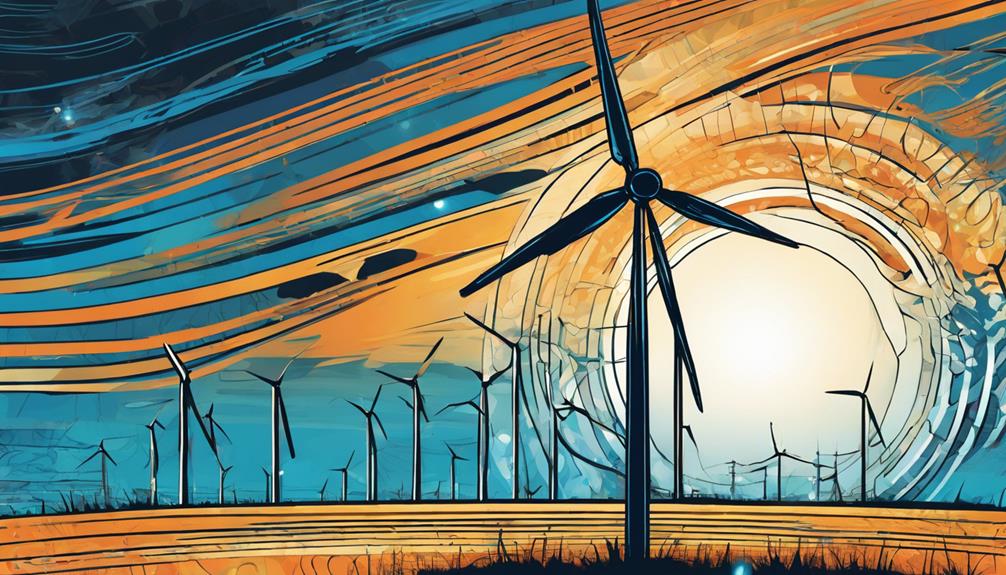I've been delving into the world of wind turbines, and let me tell you, optimizing voltage output is key to maximizing energy production and reducing costs. By implementing advanced design enhancements, efficiency improvement strategies, and regular maintenance, wind farms can greatly enhance their voltage output. From upgrading to advanced generator technology to optimizing blade shape and size, there are many strategies to explore. And, with ongoing innovation in smart grid technologies and energy storage solutions, the future of wind energy looks bright. Want to know more about how to fully realize the potential of your wind turbines?
Key Takeaways
- Optimizing blade shape, size, and aerodynamics enhances wind turbine efficiency and boosts voltage output.
- Upgrading to advanced generator technology, such as permanent magnet generators, improves power conversion and increases voltage output.
- Implementing advanced control systems and smart grid technologies maximizes voltage output and enhances control flexibility.
- Regular maintenance, including blade inspections and electrical connection monitoring, ensures optimal performance and prevents voltage fluctuations.
- Design enhancements, such as taller wind turbine towers and lightweight materials, can further boost voltage output and energy production.
Voltage Regulation and Optimization

Often, voltage regulation methods are the underappreciated champions of wind turbine performance, as they play a vital role in maintaining a stable and consistent output.
I've discovered that optimizing blade shape, size, and aerodynamic performance is crucial for enhancing efficiency and power generation.
Upgrading to advanced generator technology also improves power conversion and reduces energy loss.
Furthermore, implementing advanced control systems and conducting regular maintenance is necessary for maximizing voltage output.
By combining these strategies, I've witnessed a significant increase in voltage output, leading to higher energy production and better utilization of wind resources.
Design Enhancements for Higher Output
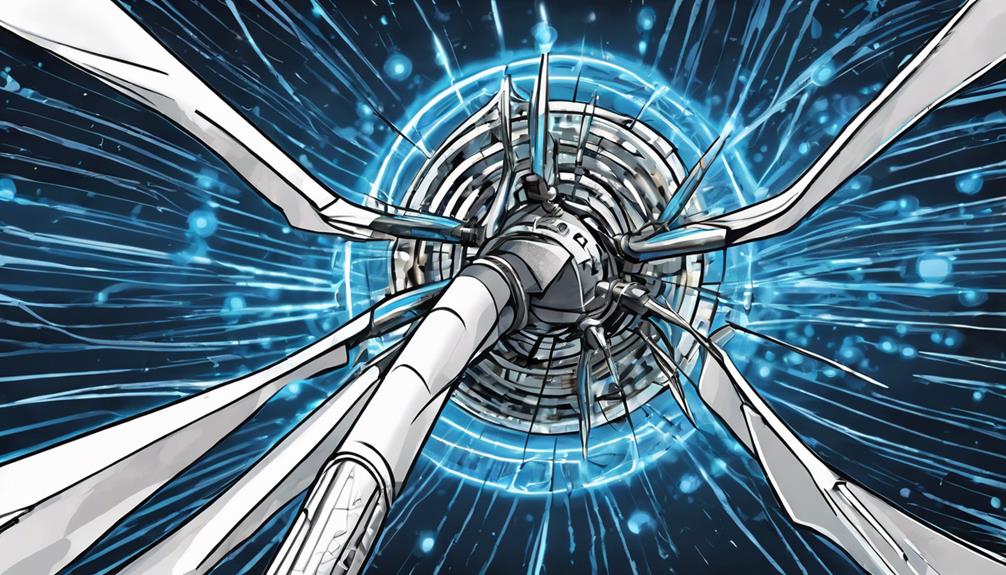
I'm now exploring how design enhancements can further boost voltage output, building on the optimized voltage regulation strategies that have already shown significant improvements.
By evaluating aerodynamic performance, I can optimize blade shape and size to capture more wind energy.
Upgrading to advanced generator technology, incorporating the latest materials, and enhancing efficiency through design optimization are also pivotal for achieving higher voltage output.
For instance, using permanent magnet generators can enhance power conversion, while taller wind turbine towers can improve energy production.
Efficiency Improvement Strategies
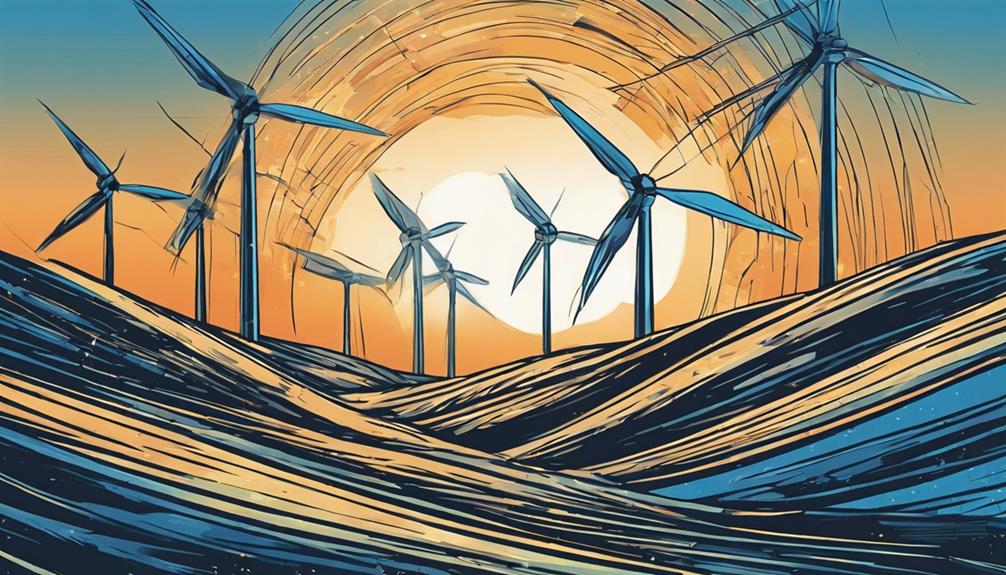
As I explore the world of wind turbine optimization, I've discovered that efficiency improvement strategies are essential for enhancing voltage output. By increasing blade length and adjusting its shape to harness more wind energy, I can extract more power out of each turbine, thereby increasing voltage output.
Using lightweight and sturdy materials reduces energy loss, allowing the turbine to operate at its peak. Upgrading to permanent magnet generators also improves power conversion, resulting in higher voltage output.
Maintenance for Optimal Performance
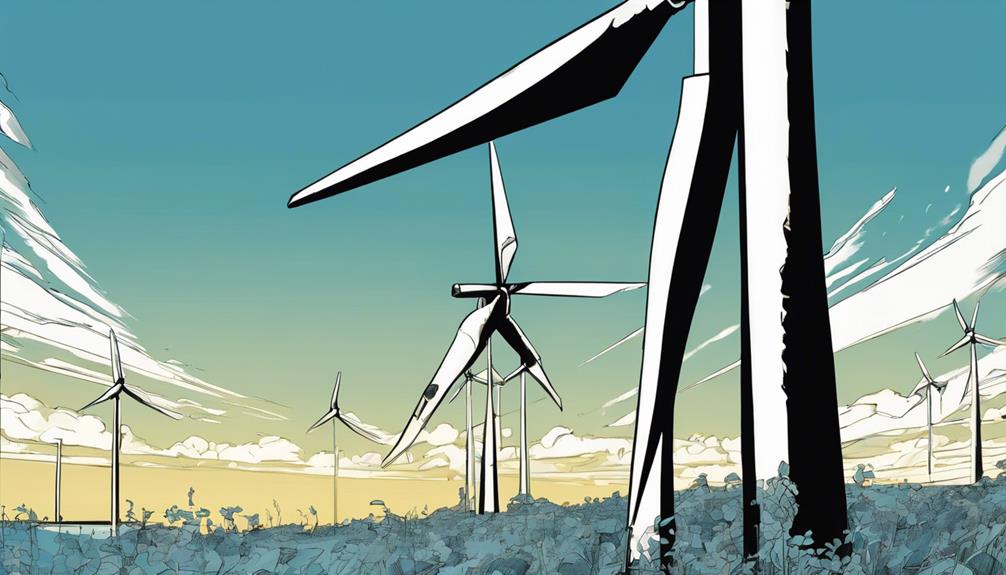
Regular maintenance is fundamental to ensuring my wind turbines operate at their best, and I make it a point to regularly inspect and clean the turbine blades to prevent efficiency losses. This simple yet essential task helps maintain peak aerodynamic performance, which in turn boosts voltage output. Additionally, I monitor and maintain electrical connections to prevent voltage fluctuations, and perform routine checks on the power converter and inverter to identify any issues early on.
| Maintenance Task | Frequency |
|---|---|
| Inspect and clean turbine blades | Quarterly |
| Monitor electrical connections | Monthly |
| Check power converter and inverter | Bi-Monthly |
Future Trends and Case Studies
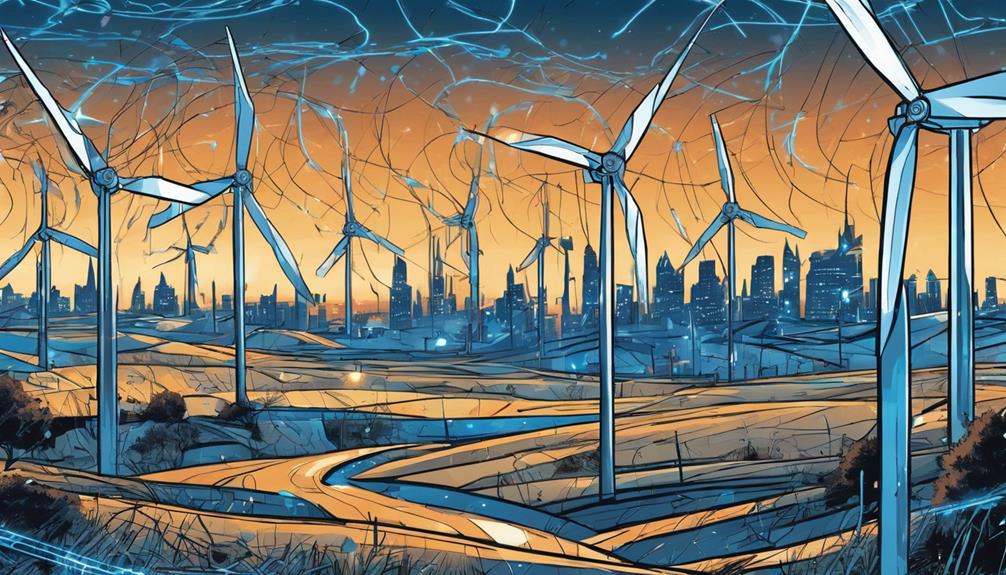
Frequently, wind turbine voltage output optimization is pushed to new heights through innovative design and technological advancements, as exemplified in a recent Texas wind farm case study. This case study showcased a 15% increase in voltage output after optimizing turbine design. This achievement highlights the potential for continued growth in wind energy production.
As researchers and developers, we can expect future trends to focus on integrating smart grid technologies and energy storage solutions to enhance voltage control flexibility. I'm excited to see how these advancements will shape the industry's future.
With ongoing innovation, we can unleash even greater voltage output and better utilize wind resources. The future of wind energy looks brighter than ever.
Frequently Asked Questions
How Do Wind Turbines Handle Varying Wind Speeds and Directions?
'When I'm dealing with varying wind speeds and directions, I rely on advanced control systems and aerodynamic blade design to adjust pitch and yaw, ensuring best energy capture and stable voltage output.'
Are There Any Environmental Concerns With Larger Turbine Blades?
"Breaking news from the 14th century: larger turbine blades are a game-changer I'm stoked to address environmental concerns, namely, potential bird strikes and habitat disruption, which must be carefully assessed and mitigated in turbine design and placement."
Can Wind Turbines Be Used in Urban Areas or Only Rural?
"I've wondered if wind turbines can thrive in urban areas, not just rural landscapes. While possible, urban installations face challenges like noise, space, and aesthetics, making rural areas typically more suitable."
How Do Wind Turbines Connect to the Main Power Grid?
'I'm curious about how wind turbines connect to the main power grid. Fundamentally, they're linked through a substation, where the generated electricity is transformed to match the grid's voltage, then transmitted to the power distribution system.'
Are There Any Government Incentives for Wind Energy Investments?
"Who needs a booster shot when the government's got your back? Seriously, yes, there are incentives like tax credits and grants for wind energy investments, making it a breeze to go green."
What Are Some Voltage Boost Strategies for Maximizing Wind Turbine Efficiency?
Maximizing wind energy revolution maximizing efficiency can be achieved through voltage boost strategies such as using advanced power electronics to optimize energy production. Additionally, employing high-efficiency transformers and grid-friendly voltage control can help ensure that wind turbines operate at their maximum potential, leading to increased energy output.
Conclusion
As I conclude this journey into the domain of wind turbine voltage boost strategies, I'm left with a sense of awe at the symphony of innovation and efficiency that's unfolding.
Like a master conductor, the industry is harmonizing design, technology, and maintenance to orchestrate a voltage revolution.
The future beckons, and I'm excited to see the melodies of progress that will emerge, as wind energy continues to electrify our world.
